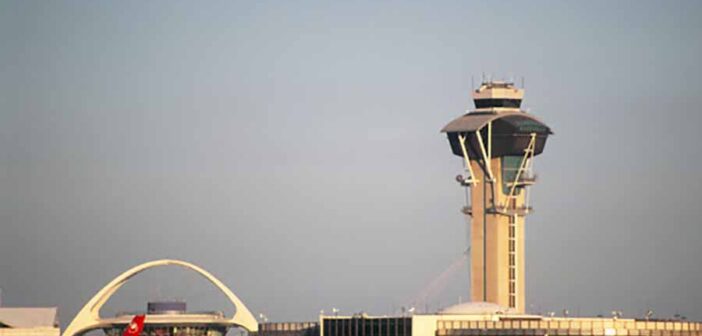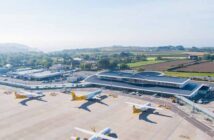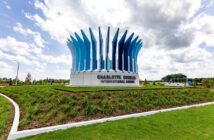Los Angeles International Airport, known as LAX, sits 29 kilometres southwest of downtown Los Angeles in the Westchester neighbourhood, serving as a major hub for over 75 million passengers annually. As the world’s fifth-busiest airport, it connects to 113 domestic and 91 international destinations with airlines like Delta, American, and United, alongside international carriers such as Qantas and Emirates. Its extensive transport links and ongoing modernisation efforts ensure a practical experience for travellers.
Accessing LAX is straightforward, with multiple transport options connecting it to Los Angeles and surrounding areas. The FlyAway bus offers non-stop service to Union Station in 45 minutes for $9.75, while Metro’s C and K Lines link to the LAX/Metro Transit Center, accessible via a free shuttle running every 10 minutes. Local buses, including Culver City and Santa Monica Big Blue Bus, serve the same transit centre for fares as low as $1.
Taxis and rideshare services like Uber pick up passengers at the LAX-it lot near Terminal 1, reachable by a short walk or free shuttle, with fares to downtown averaging $40 to $60. Drivers can access LAX via the I-405 or I-105, with parking options including the West Intermodal Transportation Facility’s 4,300 economy spaces and short-stay lots near terminals. A free drop-off zone is available on the Upper/Departures Level, though charges apply after 30 minutes. The LAX Automated People Mover, set to open in January 2026, will further streamline access to terminals, parking, and rental car facilities.
The airport’s nine terminals, arranged in a U-shaped layout, include Terminals 1 through 8 and the Tom Bradley International Terminal (TBIT or Terminal B). Terminal 1 serves Southwest, Terminal 2 and 3 are Delta’s hubs, Terminal 4 and 5 host American Airlines, while Terminals 7 and 8 are United’s base. TBIT handles most international flights. Airside walkways connect Terminals 1 to 8, with tunnels linking Terminals 4, 5, and 6, and skybridges from TBIT to Terminals 3 and 4, allowing passengers to move without re-entering security. Terminal 1.5, opened in 2022, links Terminals 1 to 3, while a shuttle bus serves the Regional Terminal (gates 52A–52I) for American Airlines.
Security wait times average 20 minutes with CLEAR and TSA PreCheck at Terminals 1, 4, 6, 7, and TBIT, but peak hours (6–9 am and 4–7 pm) can see queues up to an hour due to high passenger volumes or staffing issues. Fast Track options, from $15, help bypass lines. Travellers are advised to arrive two hours early for domestic flights and three hours for international ones.
Dining and retail options are plentiful across all terminals. TBIT’s Great Hall offers local flavours like Lemonade and Ink.
Sack, alongside international chains like Starbucks and Panda Express. Terminal 3’s The Bistro serves craft cocktails and American dishes, while Terminal 7’s Loteria Grill provides Mexican cuisine. Family-friendly menus and grab-and-go options cater to all travellers. Retail includes duty-free shops in TBIT, Terminals 2, 4, 5, 6, and 7, stocking brands like Chanel and Rolex, plus InMotion for electronics and Hudson News for essentials. Prices are often higher than in the city, so budget travellers may prefer to shop beforehand. A Reserve and Collect service offers discounts on select items.
Facilities are comprehensive, with free Wi-Fi throughout, over 1,000 charging stations, and water refill points. Family amenities include children’s play areas like LAX Beach in Terminal 6 and baby-changing facilities in every restroom. Accessibility is prioritised, with Changing Places toilets, a Sunflower Lanyard scheme, and MyWay assistance bookable 48 hours in advance. Lounges like the Delta Sky Club in Terminal 3, United Polaris in Terminal 7, and Centurion Lounge in TBIT offer snacks, showers, and workspaces for around $59, though peak-hour capacity issues can lead to waitlists. Baggage claim areas are clearly signposted, but crowding occurs during peak times. A pet relief station near Terminal 7 and a multi-faith prayer room in TBIT add to the offerings.
On-time performance faces challenges, with 2023 data showing 27% of flights delayed, often due to air traffic control shortages, fog, or runway congestion, as LAX operates at 98% capacity. Passengers are advised to monitor flight statuses via the LAX website, airline apps, or Flightradar24, especially during winter months when low-lying clouds can divert flights to Ontario International Airport, 47 miles away.
Connections are efficient, with minimum connection times of 60 minutes for domestic-to-domestic, 90 minutes for domestic-to-international, and two hours for international-to-international transfers. Airside walkways and shuttles simplify transfers, but international passengers must clear customs and recheck bags, adding time. The Delta Sky Way links Terminal 3 to TBIT, and all terminals are connected post-security, though walking from Terminal 1 to 8 takes about 20 minutes. Budget carriers may not assist with missed connections, so travellers should plan ample layover time.
Potential delays often stem from weather, particularly fog, or operational issues like baggage handling, gate availability, or IT system failures, contributing to slow self-service kiosks and disorderly queues.
Security and check-in congestion can also slow progress during peak hours. Travellers should confirm terminal assignments, as airlines like Delta operate across multiple terminals, and allow extra time to navigate the busy U-shaped layout.




